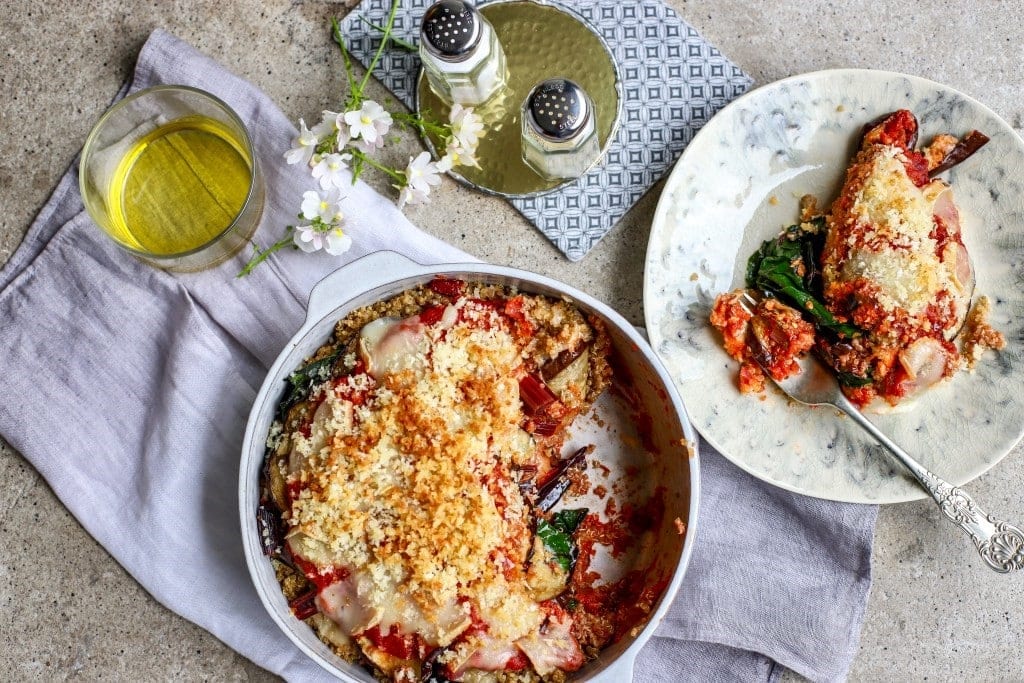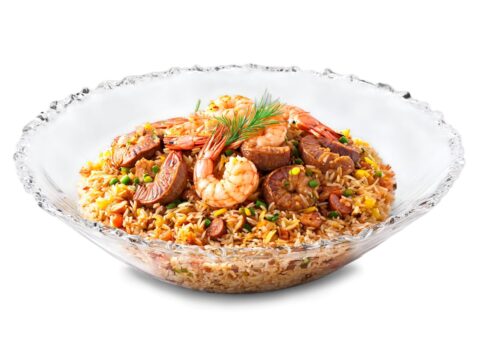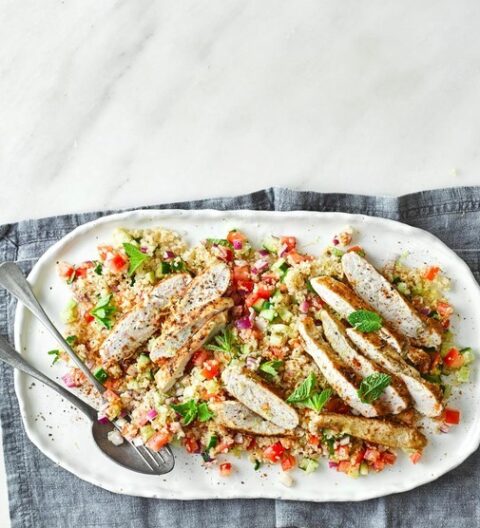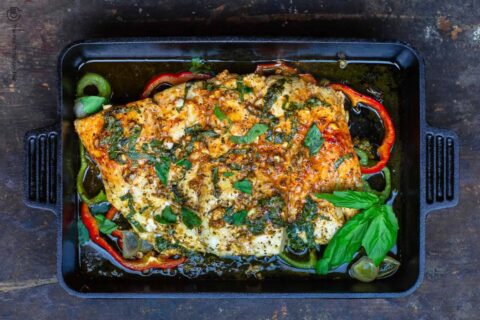
How to get the benefits of best olive oil in this delicious Mediterranean Diet special
Updated August 15th 2023
A Healthy Lifestyle Should Include Extra Virgin Olive Oil
It’s no secret that an unhealthy diet and lifestyle can lead to a whole host of health problems. Many of these issues are exacerbated by the consumption of saturated fats – which are all too abundant in our modern diets. But there is a solution in the form of extra virgin olive oil – widely considered to be the best olive oil for health benefits. Not only is it packed with all the polyphenols and antioxidants you need to keep your body fighting fit, but it can also be a vital part of a healthier lifestyle.
Adopting the principles of the Mediterranean diet – with olive oil as its primary source of fat – is a great place to start. But it’s important to remember that the truest followers of this type of eating plan are often those who incorporate other healthy habits too.
So, if you have decided to bring a touch of the Mediterranean into your kitchen, for the benefit of the whole family. But what are the crucial ingredients to stock in your larder or pantry?
Top of the list should be a high-quality Extra Virgin Olive Oil. If you want to enjoy the health benefits of olive oil we would encourage you to choose the best extra virgin olive oil you can afford. Unfiltered, unblended pure extra virgin olive oils like Morocco Gold have the highest quantities of health enhancing polyphenols – as well as a taste like no other. Morocco Gold is a superior quality, single estate Extra Virgin olive oil from an entirely new source. The oil is made from olives grown in the foothills of the Atlas mountains.
And it couldn’t be a more exciting time to try your first bottle as our 2022-2023 Harvest is now available. We are delighted to report that his year’s harvest has produced a low acidity level of 0.3% together with a continuing high level of polyphenols in our extra virgin olive oil. This means a greater concentration of the antioxidants which can circulate in your body and help to reduce a multitude of different health conditions including cancer and heart disease.
Due to minimal processing, Extra Virgin Olive Oil is the only oil that retains these important natural phenols. Extra Virgin Olive Oil is processed in a manner similar to many fruit juices: the fruit is crushed and the juice is extracted. In contrast, the other grades of olive oil (“pure” and “light”), as well as inexpensive oils such as soybean and canola, go through an industrial refining process that strips away phenols.
Extra Virgin Olive Oil with a higher phenolic content may have a more robust flavour, including some bitterness, than Extra Virgin Olive Oil with lower phenolic content. Phenolic content diminishes with time, and particularly when exposed to heat, light and oxidation, so your bottle of Morocco Gold should be stored in a cool dark place and used within a couple months of opening a container.
Extra Virgin Olive Oil & Cheesy Quinoa Vegetable Bake
We are delighted that our good friend and well-known food blogger, Kellie Anderson of FOOD TO GLOW has prepared one of her special recipes for Morocco Gold. Cheesy Quinoa Vegetable Bake (easily vegan!). Layers of chard, quinoa, grilled eggplant, marinara sauce and optional cheese equals easy, nutritious, comfort food.
Cheesy Quinoa Vegetable Bake
Ingredients
- 2 medium eggplants/aubergines sliced into 1/4 inch thick rounds or half moons
- 4 tbsp Morocco Gold extra virgin olive oil divided use
- 185 grams quinoa well-rinsed
- 160 grams chard, kale or spinach washed and chopped
- 100 grams Taleggio cheese or smoked mozzarella or similar melting flavourful cheese
- 3 tbsp panko crumbs optional
Tomato Sauce
- 1 red onion finely chopped
- 3 garlic cloves finely chopped, divided use
- 500 ml passata/tomato sauce
- 0.5 tsp salt more to taste
- 0.5 tsp sugar or honey optional, to balance acidity
- 0.5 tsp dried oregano
- 1 bay leaf
- 0.25 tsp smoked paprika
- 100 ml water
- 0.5 tbsp sherry vinegar or red wine vinegar
Instructions
- Preheat the oven to 180C/350. Slick the aubergine slices with a minimum of oil and lay on a baking tray. Bake for 15-17 minutes, until softened. Set aside for now.
- Now the sauce. Heat two tbsp of the oil in a saucepan over a low flame and add the chopped onion. Allow this to cook slowly until translucent, stirring as needed to prevent sticking. Add two of the chopped garlic cloves and cook a further minute before adding the remaining sauce ingredients. Bring to the boil then simmer, partially covered, for 30 minutes. Remove the bay leaf.
- While the sauce is simmering, add the quinoa to a lidded saucepan and pour in double the volume of water. Bring to boiling point, pop on the lid and turn down to simmer steadily for 12 minutes. Turn off the heat and let the quinoa sit under cover for a further 5 minutes. Drain if needed, but the water should be absorbed.
- Add 1 tbsp of the olive oil to a saute pan or a stove/hob-safe baking dish and heat over a medium flame. Add the chard, remaining garlic, and cook with a tablespoon of water until softened - about 5 minutes.
- To assemble the casserole/bake, spoon a thin layer of sauce over the bottom of a baking dish, followed by half the quinoa, half the chard and half of the eggplant; spoon over more sauce and half of the cheese, if using. Repeat with the final layer. Take the panko crumbs and mix with any remaining olive oil; sprinkle over the top of the dish.
- Bake the casserole for 20 minutes at 180C/350F, or until the sauce is bubbling at the side and the crumbs are browned.
- Enjoy the warm cheesy quinoa vegetable bake
Follow Kellie on Pininterest and, if you make her Comforting Cheesy Quinoa Bake, click on the pin at the bottom and leave a photo of your make with a comment telling her what you think, or any awesome changes that you made. Similarly, any Instagram posts tagged @food_to_glow using Kellie’s recipes will go on her Story if she sees them. Kellie is always so proud when you share her recipes with the world. Yay!!!
Whether on Pinterest, Instagram, Facebook, Twitter on her blog, Kellie loves to see what you do with her recipes and welcomes comments, tweaks and suggestions.**
About Quinoa
Quinoa is the seed of a plant known scientifically as Chenopodium quinoa.It is higher in nutrients than most grains and often marketed as a “superfood”.
Although quinoa (pronounced KEEN-wah) is prepared and consumed like a cereal grain, it’s categorized as a pseudo-cereal, as it doesn’t grow on grass like wheat, oats, and rice. Quinoa has a crunchy texture and nutty flavour. It’s also gluten-free and can thus be enjoyed by people who are sensitive to gluten or wheat.
Quinoa seeds are flat, oval, and usually pale yellow, though the color can range from pink to black. Its taste can vary from bitter to sweet. It’s usually boiled and added to salads, used to thicken soups, or eaten as a side dish or breakfast porridge.
The seeds can also be sprouted, ground, and used as flour or popped like popcorn. Quinoa is an excellent food for babies.
Nutrition facts
Cooked quinoa consists of 71.6% water, 21.3% carbohydrates, 4.4% protein, and 1.92% fat.
One cup (185 grams) of cooked quinoa contains 222.
Carbs
Carbs make up 21% of cooked quinoa, which is comparable to barley and rice. About 83% of the carbs are starches. The rest consists mostly of fibre, as well as a small amount of sugars (4%), such as maltose, galactose, and ribose.
Quinoa has a relatively low glycemic index (GI) score of 53, which means that it should not cause a rapid spike in blood sugar. The GI is a measure of how fast blood sugar levels rise after a meal. High-glycemic foods are linked to obesity and various diseases.
Fibre
Cooked quinoa is a relatively good source of fibre, beating both brown rice and yellocorn. Fibre makes up 10% of the dry weight of cooked quinoa, 80–90% of which are insoluble fibre like cellulose. Insoluble fibres have been associated with reduced diabetes risk. Plus, some of the insoluble fibre may be fermented in your gut like soluble fibres, feeding your friendly bacteria and promoting better overall health.
Quinoa also provides some resistant starch, which feeds the beneficial bacteria in your gut, promoting the formation of short-chain fatty acids (SCFAs), improving gut health, and cutting your risk of disease.
Protein
Amino acids are the building blocks of proteins, and proteins are the building blocks of all tissues in your body. Some amino acids are considered essential, as your body is unable to produce them, making it necessary to acquire them from your diet.
By dry weight, quinoa provides 16% protein, which is higher than most cereal grains, such as barley, rice, and corn.
Quinoa is considered a complete protein source, which means that it provides all nine essential amino acids. It’s exceptionally high in the amino acid lysine, which is usually lacking in plants. It’s also rich in methionine and histidine, making it an excellent plant-based protein source. Quinoa is gluten-free and therefore suitable for people who are sensitive or allergic to gluten.



